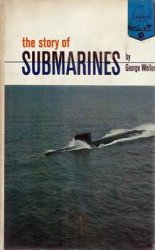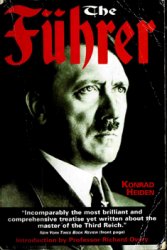The USSTAF’s commitment to the land battle, and Sir Arthur Harris’s disinterest in the oil campaign, sharply reduced the attacks on oil targets in late September. The Eighth Air Force nevertheless struck Merseburg-Leuna, two other central German oil plants, and the Bremen refineries, while the Fifteenth tackled Blechhammer, Odertal, and Auschwitz, and refineries at Budapest. German production and imports of oil fell to just 281,000 tons in September, including only 10,000 tons of aviation gasoline. The Germans ended all training for brand-new pilots, and fuel deliveries to the Luftwaffe were cut in half. The night fighter force rarely flew more than 50 sorties a night. Production of explosives fell steeply, as did that of glue and plastics. The Germans began diluting military explosives with fillers like rock salt; the manufacture of fertilizer and mining explosives was cut back in favor of immediate military needs.
Speer had foreseen immediate disaster if the air attacks went on at high intensity. Neglect and bad weather in October and November, and a reduction of fuel consumption at the relatively static front, helped him. The weather closed in earlier in 1944, and was even worse than it had been a year before. From October to December roughly 80 percent of the Eighth’s bombing was on radar. Better guidance systems were now in use, at least over Western Germany. The Eighth now used G-H, and in November it introduced Micro-H. Pulses sent by forward ground stations were picked up by H2X receivers and steered planes with that apparatus to the target. But the Americans really had no substitute for seeing a target. Bomber Command was better equipped for bad weather, but Harris mounted only six small day, and no night, attacks on oil targets in October. Only 6 percent of Bomber Command’s bombs were aimed at oil. The Eighth Air Force went after oil targets as hard as the weather allowed, but only four large oil missions were mounted, and the results were not especially good, even on visual attacks. The Fifteenth was more effective, hitting the oil plants at Odertal, Blechhammer, and Brux and the Austrian refineries. But it did not make up for the general lag.
In October German oil production recovered to a total of 316,000 tons, including 21,000 tons of aviation gasoline, and rose in November to 337,000 tons, including 39,000 tons of aviation gasoline. (Speer, whose reports sometimes show discrepancies with later Allied investigations, declared that 41,000 tons of aviation gasoline were made in November, and that automotive gasoline rose from
37,000 tons in October to 50,000 tons in November, while diesel and jet fuel rose from 66,000 tons to 73,000 tons.)
The Germans accumulated a reserve that they considered sufficient for an offensive, although it turned out that they had greatly underestimated their needs. In December the overall fuel shortage finally seriously hurt the mobility of the German army. It had already suffered serious shortages as early as the battle in Normandy, but that had been due mainly to attacks on supply routes and dumps close to the battle areas. The recovery in production was largely due to repairs to major synthetic plants. The output of the small benzol plants actually fell; they were only now being singled out for attack, and many that had not been spotted suffered in area attacks on the Ruhr.
As noted earlier. Allied reconnaissance was not keeping up with the offensive. There were too few reconnaissance planes, and their losses, small earlier, were rising as jets intercepted them. To supplement the specialized reconnaissance planes, cameras were installed in some ordinary fighters, but bad weather and smoke screens sometimes prevented any assessments.
On October 18 the CSTC resolved to do something Speer had feared for months: return to oil targets at short intervals without regard to reconnaissance or the lack of it. Weather and other things delayed this decision from being carried out; had it been implemented earlier, it would have denied the Germans the intervals between completion of repairs and Allied detection of recovery, during which they had produced much fuel.
During October the Allies realized that German fuel production was recovering. The USSTAF pressured the British to attack oil more. Portal was in the midst of a rather too gentle debate over oil with Harris, who still saw it as just another “panacea target.” During November Harris, though still insisting that he was right, found it prudent to cave in to some extent. That month Bomber Command launched eleven day and five night attacks on oil targets, for the first time attacking refineries at Harburg; 24.6 percent of the tonnage of bombs dropped in November was aimed at oil targets, compared with 6 percent in October. During December, between bad weather and the “distraction” of the German attack in the Ardennes, Bomber Command actually took over much of the burden of the oil offensive, with two daylight and three night operations. For a time Harris had resisted attacking the bigger and more distant plants at Merseburg-Leuna and Poelitz, claiming that it would be too costly, but attacks on them in December showed that, as so often before, Harris had been wrong. Only 4 of the 497 bombers sent to Merseburg-Leuna, and 3 of the 207 attacking Poelitz, went down. Losses were no greater than those suffered in attacks on closer objectives. Apparently Harris was still unenthusiastic about the oil campaign, as suggested by Portal’s complaint that he could have sent a force three times as big to Poelitz.
British losses were now low. Of 5,194 planes sent against oil plants in October-December 1944, only 57 were lost. Unfortunately, the RAF’s growing efforts still did not make up for the weather difficulties afflicting the Americans. Although 37,096 tons of bombs were dropped on oil targets in November, more than in any other month of the war, this was not reflected in the damage done. The Eighth Air Force attacked oil targets on thirteen days in November, but visual bombing was possible on only four days.




 World History
World History









